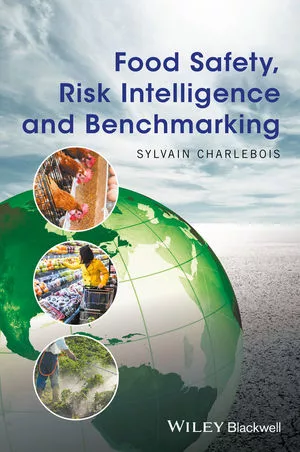EFSA Identifies Risks to Bees from Neonicotinoids
Source: European Food Safety Authority
EFSA scientists have identified a number of risks posed to bees by three neonicotinoid insecticides[1]. The Authority was asked by the European Commission to assess the risks associated with the use of clothianidin, imidacloprid and thiamethoxam as seed treatment or as granules, with particular regard to: their acute and chronic effects on bee colony survival and development; their effects on bee larvae and bee behaviour; and the risks posed by sub-lethal doses[2] of the three substances. In some cases EFSA was unable to finalise the assessments due to shortcomings in the available data.
The risk assessments focused on three main routes of exposure: exposure from residues in nectar and pollen in the flowers of treated plants; exposure from dust produced during the sowing of treated seeds or application of granules; and exposure from residues in guttation fluid[3] produced by treated plants.
Where the risk assessments could be completed, EFSA, in cooperation with scientific experts from EU Member States, concluded the following for all three substances:
- Exposure from pollen and nectar. Only uses on crops not attractive to honey bees were considered acceptable.
- Exposure from dust. A risk to honey bees was indicated or could not be excluded, with some exceptions, such as use on sugar beet and crops planted in glasshouses, and for the use of some granules.
- Exposure from guttation. The only risk assessment that could be completed was for maize treated with thiamethoxam. In this case, field studies show an acute effect on honey bees exposed to the substance through guttation fluid.
EFSA’s conclusions contain tables listing all authorised uses for seed treatment and as granules of the three substances in the EU and indicating for each route of exposure: where a risk has been identified; where a low risk has been identified; or where an assessment could not be finalised because of a lack of data.
In reaching their conclusions, EFSA’s scientists evaluated data previously submitted for the approval of the active substances at EU level and in support of product authorisations at Member State level, as well as relevant literature and monitoring data. They also considered new developments in the assessment of risks to pollinators from plant protection products, in particular recommendations contained in the EFSA Scientific Opinion on the science behind the development of a guidance document on the risk assessment of plant protection products on bees, which was published in May 2012.
This opinion, published by EFSA’s Panel on Plant Protection Products and their Residues (PPR Panel), proposed a much more comprehensive risk assessment for bees and also introduced a higher level of scrutiny for interpretation of field studies. The proposed changes are aimed at improving the level of protection afforded to bees when assessing risks from pesticides.
Furthermore, as much of the data were generated before publication of the opinion, a number of shortcomings were identified. And, because the final guidance document for the risk assessment of plant protection products and bees[4] is still under development, there is a high level of uncertainty in the latest evaluations.
All of these factors mean that EFSA’s scientists were unable to finalise risk assessments for some of the uses authorised in the EU, and identified a number of data gaps that would have to be filled to allow further evaluation of the potential risks to bees from clothianidin, imidacloprid and thiamethoxam. Finally, it is highlighted that limited information was available for pollinators other than honey bees; therefore the risk to these other pollinators should be further considered.
- Conclusion on the peer review of the pesticide risk assessment for bees for the active substance clothianidin
- Conclusion on the peer review of the pesticide risk assessment for bees for the active substance imidacloprid
- Conclusion on the peer review of the pesticide risk assessment for bees for the active substance thiamethoxam
Notes to editors:
EFSA was not involved in the evaluations that preceded the approval of clothianidin and thiamethoxam; the peer review of these active substances was organised by the European Commission before EFSA was involved in the process. In 2012 EFSA published a specific conclusion on thiamethoxam which considered data on bee exposure submitted by the applicant after approval had been granted. EFSA was involved in the peer review of imidacloprid prior to the substance being approved. In its conclusion (2008) EFSA identified a number of critical areas of concern – a high risk to bees, birds, mammals, aquatic organisms and soil-dwelling organisms was identified or could not be excluded on the basis of the available data.
Given the importance of bees in the ecosystem and the food chain and given the multiple services they provide to humans, their protection is essential. With its mandate to improve EU food safety and to ensure a high level of consumer protection, EFSA has an important role to play in ensuring their survival. The Authority’s review of neonicotinoids is one element in a range of activities it is undertaking on bee health. EFSA has recently completed a review of all its activities related to bees and is now identifying data and research gaps. Other specific outputs include the PPR Panel’s Guidance on the Risk Assessment of Plant Protection Products on Bees, which will be published in the spring of 2013; and a Scientific Opinion on the risk of introduction and spread in the EU of two bee parasites – the small hive beetle (Aethina tumida) and Asian bee mite (Tropilaelaps) – which is currently being finalised by the Panel on Animal Health and Welfare.
For media enquiries please contact:
EFSA Media Relations Office
Tel. +39 0521 036 149
E-mail: Press@efsa.europa.eu
[1] Neonicotinoids are a class of insecticides with a common mode of action that affects the central nervous system of insects, causing paralysis and death. A number of recent studies have suggested that exposure to neonicotinoids at sub-lethal doses can have significant negative effects on bee health and bee colonies.
[2] Doses that are not fatal but which may have damaging effects.
[3] Guttation is the process by which some plants exude sap in droplets that resemble dew.
[4] EFSA Guidance Document on the Risk Assessment of Plant Protection Products on Bees (draft version published for public consultation on 20 September 2012).
Looking for quick answers on food safety topics?
Try Ask FSM, our new smart AI search tool.
Ask FSM →








